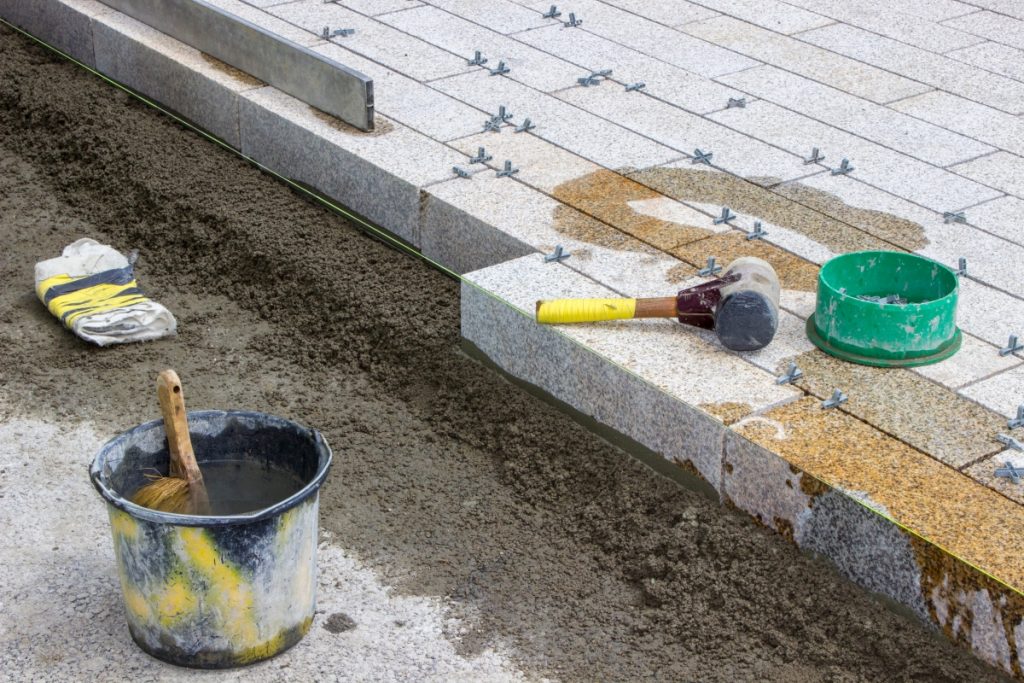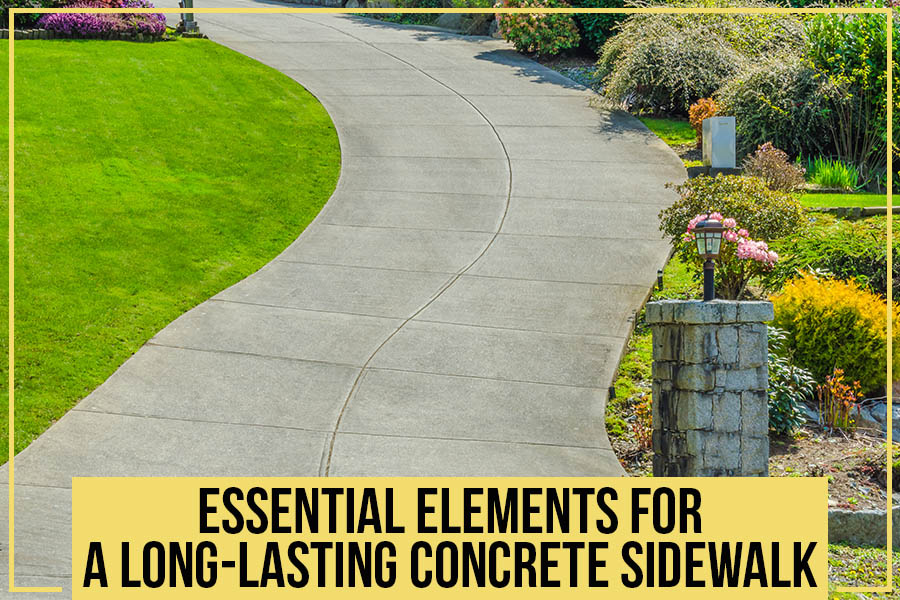Key Takeaways:
- Several elements must be considered to build a long-lasting concrete sidewalk.
- The foundation must be prepared appropriately.
- The right mix of concrete must be used.
- The concrete must be properly placed and compacted.
- The finishing process is critical.
- Regular maintenance is vital.
- Purcell’s Paving and Masonry offer seal paving and masonry services to customers in Bridgewater, NJ, and the surrounding areas.
Several elements should be considered when installing a sidewalk to ensure it is done correctly. If you’re unfamiliar with the process, it can be challenging to know where to start. Purcell’s Paving and Masonry will discuss the critical considerations for a long-lasting concrete sidewalk. Following these guidelines, you can create a safe, beautiful sidewalk that will last for years!
Factors to Consider When Choosing Concrete
Choosing the correct type of concrete for your project is essential. There are many types of concrete, each with advantages and disadvantages. You’ll need to consider factors such as climate, foot traffic, and budget when choosing the right kind of concrete for your sidewalk.

1. The Climate in Your Area
The first element to consider when choosing concrete for your sidewalk is the climate in your area. If your area experiences many freeze-thaw cycles, you’ll need to select a concrete that is more resistant to freezing and thawing. On the contrary, if you live in a hot, dry climate, you’ll need to choose a more resistant concrete to crack and dry out.
2. The Size and Traffic Requirement
The size of your sidewalk is also an important consideration. If you have a large sidewalk, you’ll need to choose concrete that can withstand the weight of heavy foot traffic. Alternatively, if you have a small sidewalk, you may be able to get away with lighter-weight concrete.
3. Your budget
Of course, your budget is one of the most important factors to consider. Concrete comes in a wide range of prices, so it’s essential to find one that fits within your budget. Note that cheaper concrete is less durable and prone to cracking and other problems.
4. The Look You Want
Another factor to consider is the look you want for your sidewalk. Concrete comes in a wide range of colors and finishes, so you can find one that matches the look you want. Remember that some finishes are more prone to fading and chipping than others.
Once you’ve chosen the suitable concrete, you must ensure it’s properly mixed. If the concrete isn’t blended correctly, it could weaken the sidewalk and cause it to crack or crumble over time.
After the concrete is mixed, it must be poured and smoothed out so there are no bumps or uneven areas.
When the concrete has cured, you can add any finishing touches, such as stamps or stencils. You can also add pigment to the mix to make the surface colorful or stain the surface after it’s cured.
Also, read our blog on Belgian block ideas for creating well-defined outdoor spaces.
5. Foundation
One of the essential elements of a concrete sidewalk is the foundation. The foundation must be strong enough to support the weight of the concrete and any traffic that will be using the sidewalk. Without a strong foundation, your sidewalk could crack or collapse over time.
6. The Right Mix
One of the essential elements of a concrete sidewalk is the right mix. The mix should be designed for the specific application and climate. For example, a sidewalk in a cold environment needs a different combination than a sidewalk in hot weather. The mix should also be designed for specific soil conditions.
7. Proper Formwork
The formwork is the mold that is used to shape the concrete. It must be solid and level to set the concrete correctly.
8. Thickness
The consistency should be at least four inches thick to provide strength and durability.
9. Adequate Drainage
Adequate drainage is critical for a concrete sidewalk. It is essential to ensure that water does not pool on the sidewalk’s surface, as this can lead to cracking and damage. Adequate drainage also helps prevent ice from forming on the sidewalk’s surface, creating hazardous conditions for pedestrians.
10. The Right Slope
The slope should be such that water drains away from the sidewalk and does not pool on it. A common mistake is to make the slope too steep, which can cause problems with drainage.
11. Smooth Surface
A smooth surface is another essential element for a concrete sidewalk. A smooth surface helps to prevent trip hazards and makes it easier for pedestrians to walk on the sidewalk. You should also ensure that the sidewalk’s surface is level, as uneven surfaces can create trip hazards.
12. Appropriate Width
The width of a concrete sidewalk is also an important consideration. It should be wide enough to accommodate pedestrian traffic but not so vast that it becomes difficult to maintain or clean. Additionally, sidewalks should be designed to not encroach on private property or public rights-of-way such as streets or alleyways.
13. Proper Reinforcement
Another essential element of a concrete sidewalk is reinforcement. Reinforcement helps to increase the strength of the concrete and prevent cracking. Common reinforcement materials include steel rebar or wire mesh.
14. Curing
Curing is a necessary process that helps to ensure that the concrete sets properly and develops its full strength. Curing involves keeping the concrete wet for some time after it has been poured to hydrate correctly. Without curing, the concrete will be weaker and more susceptible to cracking.
15. Finishing
After completing the curing process, you must finish the concrete properly. It involves troweling or power floating the surface to create a smooth, level finish. Finishing also helps to prevent scaling, which is when the surface of the concrete breaks away from the body due to freezing and thawing cycles.
16. Sealing
Sealing helps to protect the concrete from weathering and staining. It also makes it easier to clean and helps to prevent freeze-thaw damage. Sealing should be done after finishing and before any traffic is allowed on the sidewalk.
17. Regular Maintenance
Regular maintenance is another essential element for a concrete sidewalk. The sidewalk should be cleaned regularly to remove dirt, debris, and stains. You should repair any cracks or damaged areas promptly to prevent further damage.
Also, check out the best practices for the concrete sidewalk.
Need Masonry and Paving Services in Bridgewater, NJ?
Purcell’s Paving and Masonry, serving Bridgewater, NJ, can help if you need some concrete work done. We provide high-quality concrete work for both residential and commercial properties. We also offer custom paving and masonry services to look perfect for your property. So, call us if you’re looking for a new sidewalk, driveway, or patio. We will give you a free estimate to show you what we can do!
Posted in Purcell’s Paving And Masonry Blog | Comments Off

